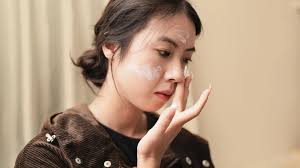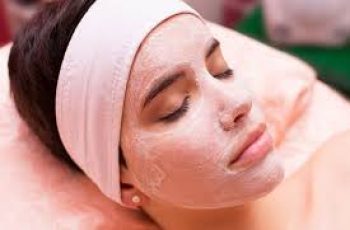
6 Occasions When You Think You Don’t Need SPF, But Really Do
I have a very fair complexion. While my friends can soak up the sun and get a deep tan in one afternoon, it takes me an entire season just to notice a few new freckles on my forearms.
Despite this, I’m often surprised how many people underestimate the importance of sunscreen in everyday life. Many think they only need SPF on the beach or by the pool.
But in reality, there are plenty of daily moments when sun protection is crucial—even if it doesn’t feel like it.
As the sunny months roll in and the UV index climbs, it’s a perfect time to bust some sunscreen myths.
Here are six common occasions where you might think SPF isn’t needed—yet your skin is silently paying the price without it.
1. You’re Behind the Wheel
You might think the car window protects you from the sun. Glass does block most UVB rays, which cause sunburn, but UVA rays sneak through.
UVA rays are sneaky culprits behind premature skin aging and some skin cancers.
If you spend a lot of time driving—whether it’s a daily commute or that epic Byron Bay road trip—sunscreen on exposed skin is essential.
Think your face, arms, and hands that often rest on the steering wheel or window ledge.
Even a few hours of driving without SPF can add up. UVA rays penetrate deeply and cause long-term damage, which often shows up as wrinkles, pigmentation, and loss of elasticity years later.
Don’t forget the side windows, especially on the driver’s side in countries where they aren’t tinted. A broad-spectrum sunscreen with at least SPF 30 applied daily is your best defense on the road.
2. You’re on an Aeroplane
This one might sound surprising but hear me out. Aircraft windows block most UVB rays, but UVA rays can still slip through—especially if you’re lucky enough to snag a window seat.
Flying exposes your skin to higher levels of UV radiation, due to thinner atmosphere at altitude and reflective clouds.
Cloud cover may make the sun feel softer, but it doesn’t block these rays, it often amplifies them.
Long haul flights mean hours of sun exposure. It’s wise to apply sunscreen before boarding and reapply if you’re on a long flight. Pull down your window shade when possible to reduce direct exposure.
Even in-flight, your skin deserves protection. Those subtle UVA rays add up over years, contributing to premature aging and pigmentation. So next time you fly, pack your SPF—it’s as important as your headphones!
3. You’re Working in an Office
You might think being indoors means you’re safe from sun damage. Generally, yes. But if your desk is near a window with direct sunlight streaming in, UV rays can reach your skin.
Glass blocks UVB but not all UVA, which penetrates windows and causes damage from within. Over time, this can lead to pigmentation, wrinkles, and even increase the risk of skin cancer.
If you find yourself soaking up afternoon sun through your office window, don’t skip SPF on your face, neck, arms, and hands. A lightweight moisturizer with SPF or a dedicated sunscreen is perfect.
If clothing covers some skin, great. But it’s best to layer sun protection with SPF products to block scattered UVA rays. Think of it as insurance against slow, invisible damage.
Even a few hours a day indoors by a window means your skin is still exposed, so don’t neglect sun protection during work hours.
4. You’ll ‘Only Be Outside for 5 Minutes’
How many times have you skipped sunscreen because you’re “only going to be outside for a few minutes”? Maybe you’re rushing out to grab the mail, running errands, or walking your dog.
It’s tempting to think that a few minutes won’t cause harm. But those short bursts add up quickly. All those small moments can equal hours of sun exposure over weeks and months.
UV rays cause cumulative damage, meaning skin damage builds over time even if it’s not obvious immediately. Pigmentation, sun spots, and premature aging result from this slow accumulation.
So, if you’re heading outdoors—even briefly—make it a habit to slap on sunscreen. It’s a small step that pays off with healthier skin and fewer wrinkles in the long run.
Consistency beats occasional diligence. You’ll thank yourself later for the commitment to daily SPF, even on “just 5 minute” trips outside.
5. You’re Under the Beach Umbrella
Beach umbrellas are a classic summer essential. They block direct sun and provide welcome shade during long days on the sand. But they aren’t a perfect shield against UV damage.
Shade helps by blocking direct rays, but UV radiation scatters and reflects off sand, water, and nearby surfaces. This reflected light can still reach your skin and cause burns or damage.
Relying solely on an umbrella without sunscreen is risky.
It’s essential to use a combination of sun protection methods: umbrella shade, broad-spectrum SPF, a wide-brimmed hat, sunglasses, and protective clothing.
Even on cloudy or shaded days, SPF is your best friend. A water-resistant sunscreen with at least SPF 30 is ideal for the beach. Reapply every two hours or after swimming and sweating.
Remember, no single method is perfect alone. Combining strategies creates a barrier that keeps your skin safer during those long, sunny beach sessions.
6. It’s Overcast
This one is a big myth that needs busting! Many people believe cloudy days mean no sun damage risk. But ultraviolet rays penetrate right through clouds and can harm your skin even when the sun is hidden.
UV rays are present anytime there’s daylight, regardless of cloud cover. On an overcast day, up to 80% of UV rays can still reach you. This invisible radiation contributes to skin aging and skin cancer risk.
Always check the UV index. When it’s 3 or higher—which it often is even on cloudy days—your skin needs protection. SPF 50 or higher is best for consistent defense.
The skin damage from missed SPF on cloudy days accumulates silently and can cause pigmentation and wrinkles years later. Don’t be fooled by the sky!
So, always apply sunscreen before heading outdoors—even if it’s gray and gloomy. Your skin will thank you with a smoother, brighter appearance over time.
Bonus: It’s After 5pm—Do You Still Need SPF?
The sun’s rays are strongest between 10am and 4pm, so many believe after 5pm sun protection isn’t needed.
While UVB rays fade and the risk of sunburn drops, UVA rays remain at a significant level as long as there’s daylight.
UVA rays penetrate deeper into the skin, contributing to aging and DNA damage. Their intensity lessens later in the day but doesn’t disappear until sunset.
Depending on your location and season, the sun may still be strong after 5pm. For example, during Australian summers, “slip, slop, slap” applies well into the evening.
So, if you’re outdoors after 5pm, especially near reflective surfaces like water or sand, consider maintaining your SPF routine for added protection.
Better safe than sorry—your skin’s long-term health depends on consistent care, not just occasional bursts.
Final Thoughts
Sunscreen is a small step with huge payoffs. It protects against premature aging, sunspots, skin cancer, and more. The tricky part is that many everyday activities expose us to UV rays more than we think.
Whether you’re behind the wheel, flying thousands of feet above ground, or sitting by a window at work, these are moments your skin needs you to be vigilant.
Don’t let myths about cloudy days or short outdoor bursts fool you. Make SPF part of your daily routine, no matter where you are or what you’re doing.
Your skin is your largest organ, your barrier to the world. Taking care of it means more radiant, healthier skin for years to come.
Slip on the sunscreen. Slap on a hat. Seek shade when you can. Your future self will thank you.
If you’d like, I can help create a handy infographic or social media posts from this article to spread the word about unexpected sun exposure risks. Just let me know!


